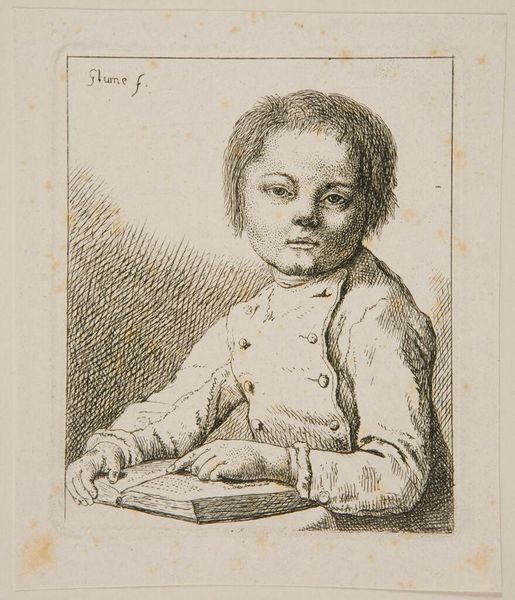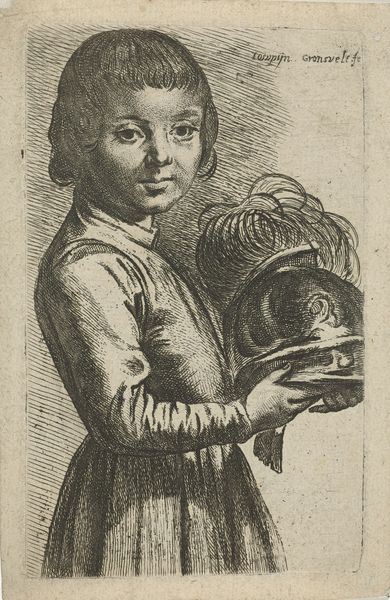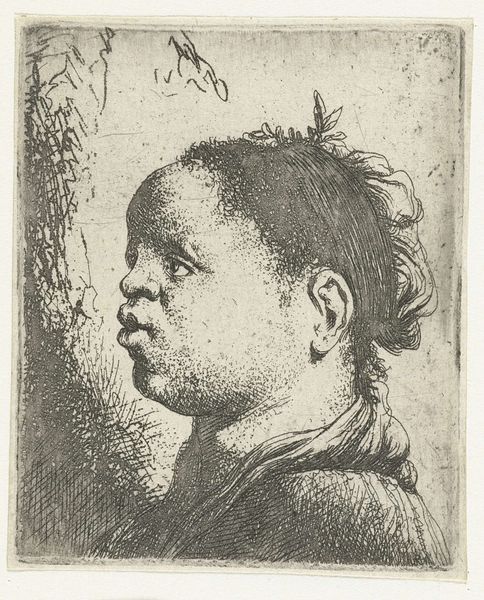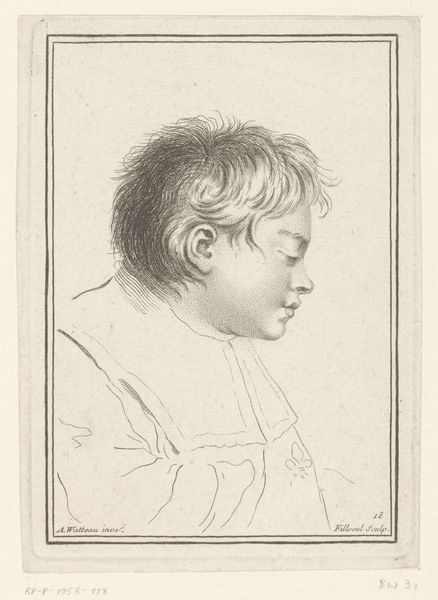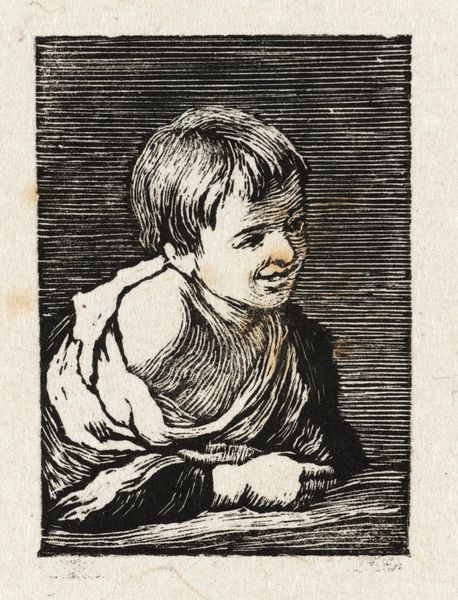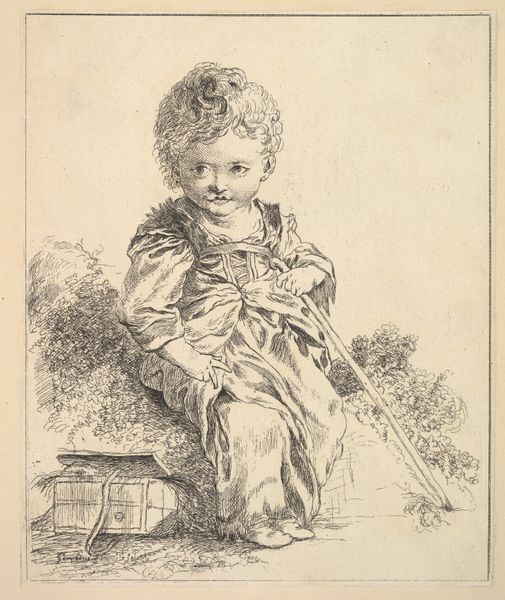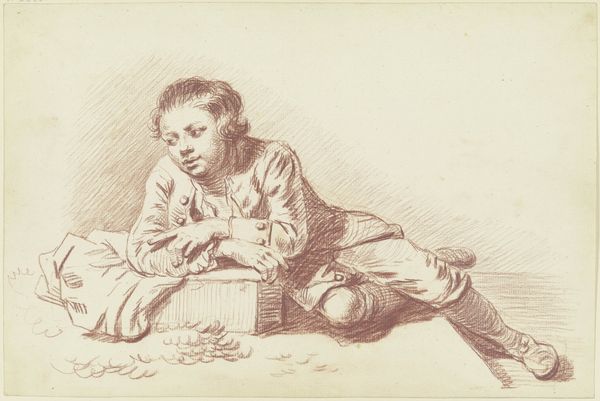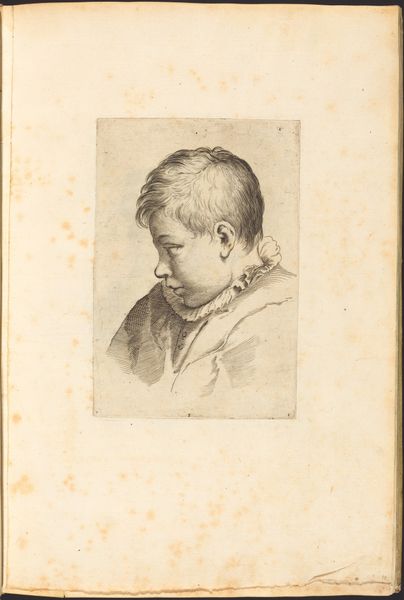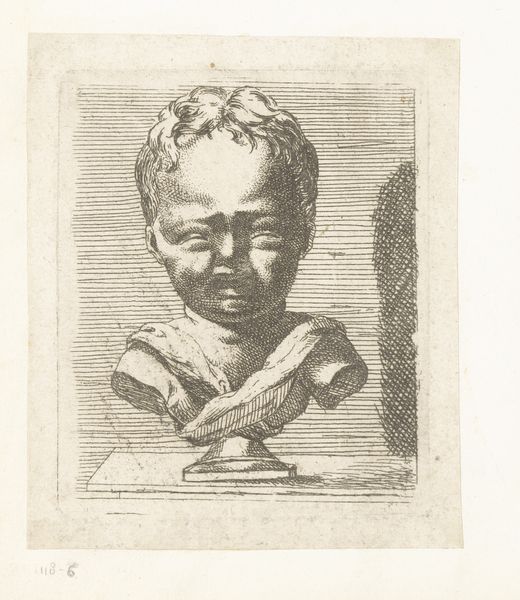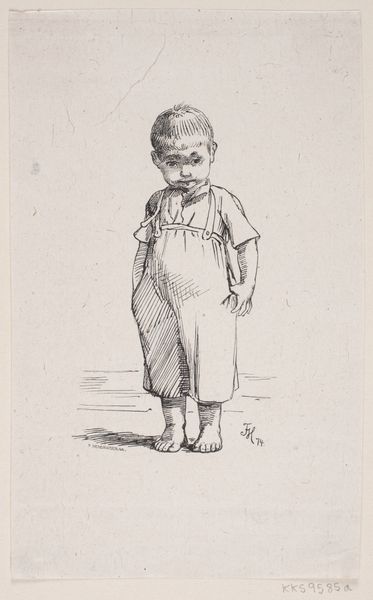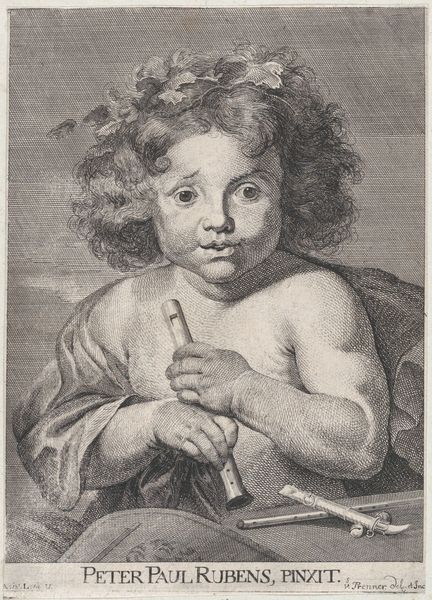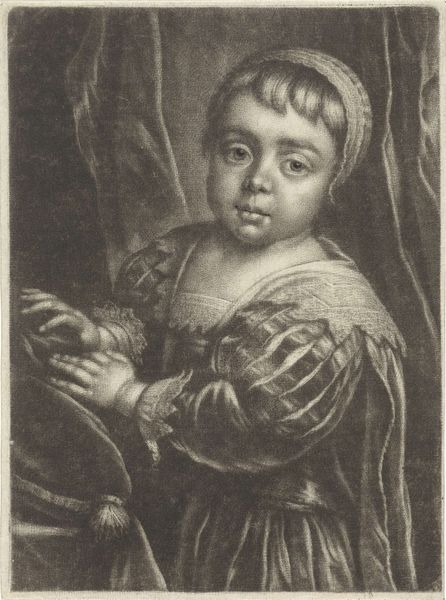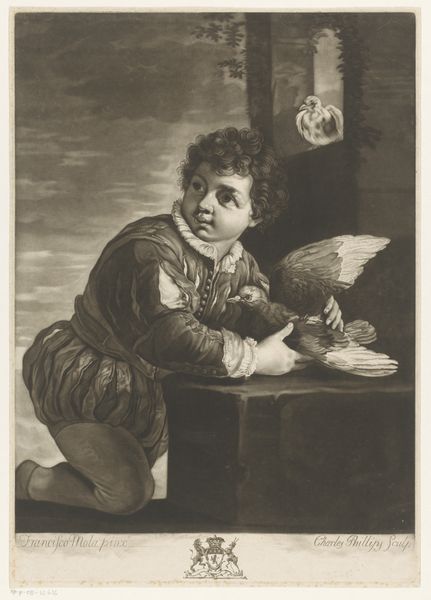
Dimensions: 121 mm (height) x 95 mm (width) (plademaal)
Curator: Let’s turn our attention to "En lille Pige, halv Figur," or "A small Girl, Half Figure" as it’s also known. Created in 1761 by W.A. Müller, it's an engraving, a type of printmaking that was quite popular in the Baroque period. Editor: My first impression is of a certain gentleness despite the formal nature of the portrait. The subject's gaze, though direct, feels soft and contemplative. I’m immediately drawn to the lace detailing on the sleeves and neckline; there's almost an ethereal quality to it. Curator: Absolutely. These portraits, despite depicting individual subjects, also served as indicators of status. Notice the child’s clothing and the prop they are holding, it all spoke to social standing. Engravings, in particular, democratized portraiture as they could be widely distributed, enabling broader audiences to access images of people—often from the upper classes—and also disseminated idealized visual notions about youth, childhood, class, beauty, and success. Editor: That’s an excellent point. And it is very intriguing what she holds in her hand... That gathered pouch is really quite central, isn’t it? It’s tied up with such deliberate care, and she cradles it almost protectively. What do you make of it? Curator: Knowing the era, I’d suggest it contains some valuable possession – perhaps her dowry or important jewelry – symbolically showcasing not just the child herself, but the family's prosperity. It might be a rather literal representation of wealth, presented within the formal conventions of portraiture at the time. Editor: It could also represent something more personal; perhaps an inherited object with sentimental, generational significance. The very careful manner with which it is held suggests something deeply treasured by the child herself. Curator: Perhaps a symbolic fusion of both, wouldn't you agree? Portraits can show, but also carefully conceal some of what sits behind them. The social role of portraiture also had its codes that were there to project prestige and success. Editor: Precisely, and those dualities offer intriguing layers for interpretation even centuries later. The artwork remains as an interesting cultural record but at the same time shows us an immediate and tangible portrayal. Curator: Exactly. By thinking about these factors together, we move towards a richer comprehension of both the artwork itself, and the world from which it originated.
Comments
No comments
Be the first to comment and join the conversation on the ultimate creative platform.
